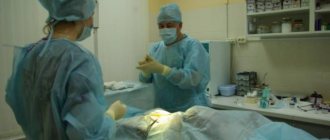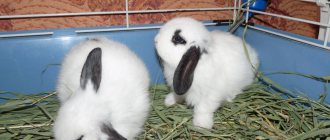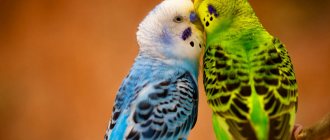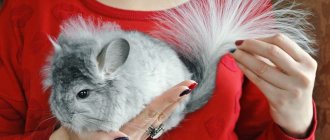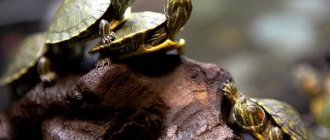How to get rid of sulfur
The history of the pug breed goes back almost one and a half hundred years, during which time the rules for caring for these wonderful dogs have developed. There are rules for everything, including cleaning your ears. Dogs of this breed have earwax that is much darker than that of humans; the dark brown color should not scare you. Sulfur has a special smell, but it cannot be called unpleasant, it is not purulent or putrefactive. Normally, the inside of the ear is a pale shade of pink, even almost white, without redness or pimples.
To maintain daily hygiene, “dry” cleaning is quite enough; if desired, you can use special lotions or wet wipes, which are sold in a large assortment in modern pet stores. When choosing such products, it is better to give preference to already well-known brands. Cosmetics can cause allergies in your pet; if your pet scratches its ear after cleaning with the product, or you notice irritation, then it is better not to use it. Drops are not recommended for routine ear cleaning; they are used in the treatment of hearing diseases.
Earwax is removed with a cotton pad or swab; do not stick the sticks deep into the ear, as this will damage the eardrum. You can only clean the area that is visible. Using a cotton pad soaked in a special lotion, gently wipe the inside surface of the ears. The folds inside are cleaned with a cotton swab. If there is a lot of sulfur, drop a little (a few drops!) of lotion and wait 30 minutes, and then continue the hygiene procedure as usual. If the fold is difficult to clean, place the animal on its back, carefully lay the ear on the bedding, then it will be easier to clean hard-to-reach places. If your pet is nervous, calm him down by talking to him; dogs perfectly understand the intonation of human speech.
Treatment
Before starting full treatment, it is necessary to exclude the pug from contact with allergens. This could be food, animal care products, or even a product that the owner uses to wash the pet’s dishes. Limit your walks during the flowering period of various plants. If the allergen can be identified and eliminated, then treatment can begin. If it is not possible to identify the allergen, you must contact a veterinarian and carry out a diagnosis.
Local treatment
The use of topical medications is aimed at eliminating the external manifestations of inflammation, getting rid of itching and redness. Antibacterial agents are used for this. Veterinarians often prescribe complex therapy consisting of several drugs:
- Sanoderm ointment has anti-inflammatory and antibacterial properties;
- Hypoallergenic shampoos Herba Vitae, 8in1 Sensitive Shampoo or Espree Aloe Oat bath Medicated Shampoo are used to eliminate itching and redness and soothe the skin;
- To quickly heal open wounds, use Ranosan, Sanatol or Bioseptin;
In case of allergies in the pug's ears, Suprastin, Tavegil and even Diphenhydramine are prescribed. To effectively use topical medications, you must carefully clean the affected skin before use. Failure to prepare the skin area for procedures may not provide a therapeutic effect.
Read Treatment of enteritis in dogs at home
Tablets, solutions and injections
The use of medications for internal use is the main step in the treatment of allergies in pugs. Prescription of drugs should be carried out by a qualified veterinarian. Typically, the treatment regimen for the disease is as follows:
- First of all, they give antihistamines - Suprastin, Tavegil, Diphenhydramine;
- The next step will be treatment of allergy symptoms and its consequences - Cyclosporine, Apoquel;
- Further, the risk of developing secondary infections in open wounds is eliminated. For this purpose, the drugs Sofradex, Otipax, Surolan are used.
- To speed up your pet's recovery, your veterinarian may prescribe immunomodulators, vitamins and minerals.
The duration of treatment depends on the severity of the allergy and the dog’s immunity. It usually takes no more than two weeks to get rid of all symptoms.
Hypoallergenic food
Poor nutrition in a pug is the most common cause of allergies in both the ears and other parts of the body. Dietary adjustment is considered the most effective way to treat it. Even if the symptoms of a food allergy have been eliminated with the help of medications, the disease can only be completely eliminated by eliminating the allergen from the diet.
It is extremely difficult to identify an allergenic food component; for this, a special mono-diet is used:
- Eliminate chicken from the diet, which very often provokes allergies in pugs. You can replace it with rabbit or lamb.
- Only rice can be given with meat; this is the only grain that does not cause allergies in 99% of cases.
- The pug should eat only rice and meat for 2 weeks. Further, it is allowed to introduce one component into the diet every 5 days.
- This way you can identify which foods cause allergies in your pug and which are hypoallergenic. The allergen must be immediately excluded from the menu.
- It is advisable to write down the foods that the owner gives to the dog and describe the pet’s reactions to them. This way you will have a list of safe and unsafe foods.
Read Causes of alopecia in Spitz: effective ways to eliminate the problem
Bad dry food is more difficult to identify, but the principle is the same. Replace producers and types of food for 5-7 days and observe the reaction. The problem of allergies in pugs is not isolated; reviews from owners have compiled a list of safe dry food for pugs:
- Care Adult Large Breed lamb with rice;
- Golden Eagle Salmon&Potato Adult;
- Our Mark with lamb and rice;
- Monge (2.5 kg) Specialty Line Hypoallergenic – Salmon and Tuna;
- Golden Eagle Lamb&Rise;
Hypoallergenic foods are now very common and can be bought at any pet store. You should not buy large amounts of food at once; some of it may not be suitable for your pug. Allergies are a very individual phenomenon and can be caused by even the most harmless substances.
How to glue ears correctly
A pug's ears begin to break during the period of teeth change. Both “buttons” and “roses” fully comply with breed standards, but “buttons” are more preferable from an aesthetic point of view. The head of an animal with this shape of ears looks rounder and more beautiful.
To give your pet's ears the desired shape, they are glued together. For this procedure you will need a regular patch. Two narrow strips 10-15 cm long fix the desired shape of the ear (see the photo for how this is done).
The adhesive plaster will come off on its own, no need to remove it yourself. The ears will not take the shape of “buttons” immediately; after the first 1-10 days they will break again, and the operation will have to be repeated. There are cases when you have to resort to this practice until the pet is one and a half years old.
Inflammation of the ears
Pug ears are prone to otitis media. Improper ear cleaning will increase your risk of developing this condition. Symptoms:
- the pug scratches its ears, tilting its head;
- unpleasant-smelling discharge appears from the ear;
- the dog’s general mood deteriorates;
- the temperature rises;
- severe redness and swelling appears.
In advanced cases, when the middle and inner ear are affected, your pet may experience pain when moving its jaw, it is difficult for him to chew, eye discharge appears, bad breath appears, if the disease is not treated on time, the animal faces deafness. With such symptoms, you should not try to treat the disease yourself; you must urgently contact a veterinary clinic.
How to treat pug ears? Depending on the severity of the disease, the doctor will prescribe different treatments. It includes: cleaning the ear canals with saline; ear drops; taking antibiotics; if there is a tumor, then surgical intervention cannot be avoided.
To provide first aid for otitis, you can drip: Sofradex, Ottipax, Bars drops, Ottinum. These medications will help relieve pain and itching.
Disease prevention
Prevention measures include eliminating the pug's contact with the allergen. We already know what can cause allergic reactions in dogs, so the use of such points will help prevent the disease:
- Eliminate allergens from food. New foods should be introduced into the diet carefully, observing the reaction to the new component for 5-7 days.
- An allergy can be caused by a medicine used to treat a pug for other diseases. If the allergy is not severe and the course of treatment is not long, then you can be patient for a while. But if the dog suffers greatly from such drugs, then it is better to replace such drugs with others.
- To care for the coat and wash your pet, use only hypoallergenic shampoos and products.
- If a pug wears special clothes, it is important what means are used to wash the clothes and what material they are made of.
- If allergies appear or become more complicated when walking, change the places for walking or limit them while the plants are flowering.
There are no special medications to prevent allergies in dogs. You need to be content only with the above methods. Using the recommendations of veterinarians, you can eliminate the problem for a long time.
Dangerous insects
During a walk in the summer, insects can easily get into a pug's ears. Is your pug scratching its ears and shaking its head vigorously? Quickly examine the animal. If there is an insect in the ear, it needs to be removed. The insect will not get inside the ear; it will remain in the external auditory canal, from where it can be easily removed. Place the oil in the ear and place the pet on its side; the insect will float to the surface. Now it is easy to remove it with a regular cotton swab. If an insect has crawled deep into the ear, then it is better not to try to pull it out; you will harm the dog by pushing the “alien” deeper. Contact your veterinarian.
Should your dog's ears be cleaned?
Ear cleaning for long-eared dogs should be done twice a week, and for short-eared dogs - 1-2 times a week. A small amount of dark brown sulfur is normal for healthy dogs. They lubricate the ear, protecting it from dirt and damage.
How often?
For timely detection of pathologies, the ears must be examined daily. If there is an unpleasant odor coming from the ears or pus is flowing, this indicates the development of an infectious disease and the need to immediately show the animal to a veterinarian.
Cleaning itself should not be done more than a couple of times a week. Moreover, daily cleaning of the ears will only do harm, since sebum and wax in small quantities protect the dog’s ears from temperature changes, dirt and dust.
Reference! Before cleaning your dog's ears, make sure it is really necessary.
Short-haired dogs with erect ears do not need frequent ear cleaning, while long-haired dogs with floppy ears need regular hygiene procedures as their ears are poorly ventilated and constantly sweat.
Much depends on the age of the animal - the older the dog, the more often it becomes necessary to clean the ear canals from serous deposits .
The pet’s lifestyle also plays a role - if the pet spends most of its time at home and walks only when necessary, the ears hardly get dirty . If the dog spends a lot of time outside and is a frequent companion of the owner on trips out of town, more time should be devoted to the ears.
How to clean your pet's ears?
- Drops - in addition to cleaning functions, drops protect the ears from inflammation, have a healing effect on wounds and destroy harmful bacteria that multiply in sebum. Before using the drops, the ears should be cleaned with a cotton swab.
Important! Do not use ear drops without consulting your veterinarian as some ingredients may cause an allergic reaction.
- Hygienic lotions soften and dissolve earwax, which the dog can then remove by shaking it off, or the owner can remove it through massage.
What else will you need?
- Cotton swabs or cosmetic discs . Experts do not recommend the use of cotton swabs to inexperienced dog owners, as they must be used very carefully, trying not to damage the ear canal and thin blood vessels. Cotton pads are much safer in this regard - you can gently clean the dog’s ear without fear for its health.
Note! It is better not to use gauze or cotton wool to clean dog ears, as small lint or threads can remain inside the ear canal and cause a lot of discomfort to the pet.
- Sanitary napkins for dogs can be purchased at almost any vet. pharmacy. They are small woven patches impregnated with a special hypoallergenic composition that dissolves dirt without irritating the sensitive skin of the ears.
- Powder is widely used to care for long ears. Absorbs excess moisture and dirt, which is a beneficial environment for the proliferation of pathogenic bacteria.
Can I clean with hydrogen peroxide?
Despite the fact that many dog owners use this product for cleaning ears at home, this is strictly forbidden, since hydrogen peroxide can cause a chemical burn to the animal’s ears . It is not a good idea to use lotions or tonics intended for human use - they often contain cosmetic fragrances that can cause an allergic reaction.
Can I clean with chlorhexidine?
Chlorhexidine may be relevant for cleaning the ears only if you notice alarming symptoms of an inflammatory disease - redness of the skin, unpleasant odor, discharge, etc. You need to drop a few drops of the solution into the ears and gently massage. This will make your dog feel better before visiting the veterinarian.
Otherwise, chlorhexidine is not the best product for hygiene procedures. It is better to give preference to special drops or lotion.
How to deal with ticks
Ear mites are a microscopic parasite located mainly in the external auditory canal and on the inner surface of the ear. The dog will itch a lot, and when you touch the ear, you will notice that it has become too hot. Black grains and crusts appear in the sulfur. All these are symptoms of ear mites.
But the diagnosis can be accurately confirmed after examining ear discharge in the laboratory; there is no need to treat the dog until we know everything for sure. How to treat pug ears in this case? Treatment for otodectosis is long and difficult. The drugs used for treatment destroy the mite. These are AnandinPlus and Tsipam, they need to be dripped into the ear. Since the medications act on living ticks and not their eggs, it is impossible to end treatment prematurely!
With advanced disease, otitis media develops.
Proper care for pugs
Pugs: the care and maintenance of this breed does not require large expenses. It’s easy to get along with them even in a one-room apartment.
In a house or apartment, the dog should have its own bed, located away from drafts or hot radiators. This is a low trestle bed with a mattress made of hypoallergenic materials. Given year-round shedding, mattress covers should be removable and washed regularly.
Caring for a pug begins with purchasing the items necessary for its maintenance. This:
- 2 bowls: drinking bowl and for food;
- collar;
- leash;
- rubber brush for hair removal and massage;
- nail clipper;
- Furminator - a metal comb with a razor for removing dying undercoat.
Dogs love to chew on any objects, so it is better to immediately buy them special toys for this.
Tooth and claw
Organize dental care as soon as the puppy arrives at home. From the age of three months to six months, he begins to change his milk teeth to molars. This is often accompanied by loss of appetite, high fever and itchy gums. The dog is trying to relieve the itch, gnawing everything that comes in its way. To speed up the loosening of baby teeth and their loss, give your pug bull knuckles or other hard treats.
Important: In order for your pet to maintain relatively healthy teeth into old age, you should not give an adult dog dried chewing gum or pull any objects from its mouth.
Pugs often develop an unpleasant odor due to damaged teeth. A dog with bad teeth is prone to frequent intestinal disorders; it refuses to eat and drink. The reason is simple: under the influence of bacteria accumulated in tartar, the tooth enamel is destroyed, and it becomes sensitive to any touch.
You can avoid plaque by letting your dog chew on sugar bones or cartilage. Soften any plaque that has already appeared with a special spray and remove it with a soft brush or a gauze cloth wrapped around your finger. Pugs have small lips that fit tightly to the jaw. Cleaning them is difficult, but it is better to accustom your dog to this procedure from an early age.


